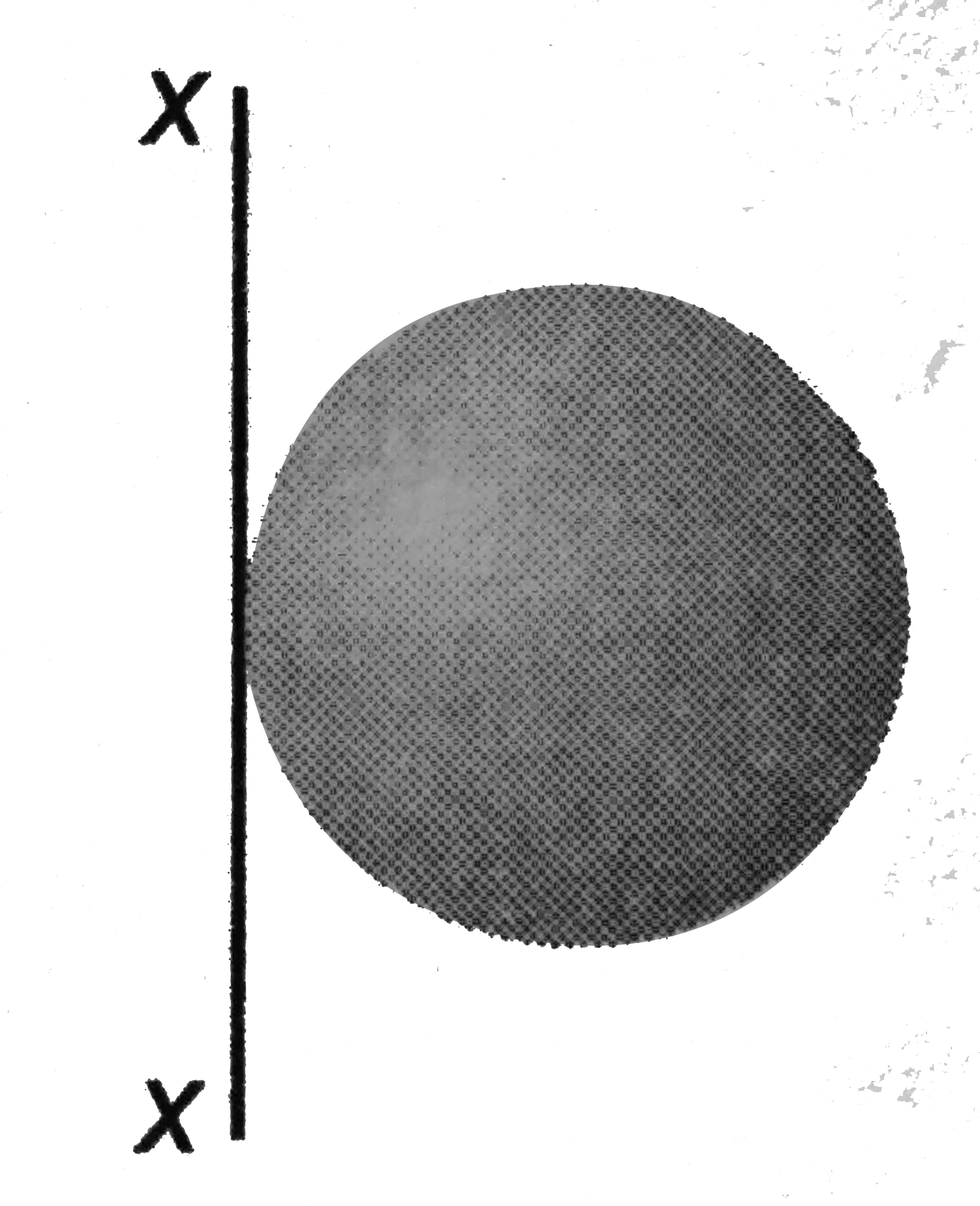The moment of inertia of a sphere of mass M and radius R about an axis passing through its centre is . The radius of gyration of the sphere about a parallel axis to the above and tangent to the sphere is
To find the radius of gyration of a sphere about a parallel axis that is tangent to the sphere, we can use the parallel axis theorem. Here’s a step-by-step solution:
Step 1: Understand the given information
We know the moment of inertia IC of a solid sphere about an axis through its center is given by:
IC=25MR2
where M is the mass of the sphere and R is its radius.
Step 2: Identify the new axis
We need to find the moment of inertia about a new axis that is parallel to the first axis and tangent to the sphere. The distance d between the center of the sphere and the new axis is equal to the radius R of the sphere.
Step 3: Apply the parallel axis theorem
The parallel axis theorem states:
IP=IC+Md2
where:
- IP is the moment of inertia about the new axis,
- IC is the moment of inertia about the center,
- M is the mass of the sphere,
- d is the distance between the two axes.
Substituting the known values:
IP=25MR2+M(R2)
IP=25MR2+55MR2=75MR2
Step 4: Relate moment of inertia to radius of gyration
The moment of inertia can also be expressed in terms of the radius of gyration k:
IP=Mk2
Setting the two expressions for IP equal gives:
Mk2=75MR2
Step 5: Solve for the radius of gyration k
Dividing both sides by M:
k2=75R2
Taking the square root:
k=√75R
Final Answer
The radius of gyration of the sphere about the parallel axis tangent to the sphere is:
k=√75R
---
We know the moment of inertia IC of a solid sphere about an axis through its center is given by:
IC=25MR2
where M is the mass of the sphere and R is its radius.
We need to find the moment of inertia about a new axis that is parallel to the first axis and tangent to the sphere. The distance d between the center of the sphere and the new axis is equal to the radius R of the sphere.
The parallel axis theorem states:
IP=IC+Md2
where:
- IP is the moment of inertia about the new axis,
- IC is the moment of inertia about the center,
- M is the mass of the sphere,
- d is the distance between the two axes.
IP=25MR2+M(R2)
IP=25MR2+55MR2=75MR2
The moment of inertia can also be expressed in terms of the radius of gyration k:
IP=Mk2
Setting the two expressions for IP equal gives:
Mk2=75MR2
Dividing both sides by M:
k2=75R2
Taking the square root:
k=√75R
The radius of gyration of the sphere about the parallel axis tangent to the sphere is:
k=√75R
Similar Questions
What is the moment of inertia of a hollow sphere about an axis passing through its centre ?
View SolutionThe moment of inertia of a solid sphere about an axis passing through its centre of gravity is 25MR2 . What is its radius of gyration about a parallel axis at a distance 2R from the first axis ?
View Solution
Knowledge Check
The moment of inertia of a sphere of radius R about an axis passing through its centre is proportional to-
AR2BR3CR4DR5The moment of inertia of a solid sphere of mass ‘M' and radius 'R' about a tangent to the sphere is
A25MR2B63MR2C45MR2D75MR2Moment of inertia of a ring of mass M and radius R about an axis passing through the centre and perpendicular to the plane is
A1/2MR2BMR2C1/4MR2D3/4MR2
The M.I. of the solid sphere of density 'rho' and radius 'R' about an axis passing through its centre is given by
View SolutionThe moment of inertia of a solid sphere about an axis passing through the centre radius is 12MR2 , then its radius of gyration about a parallel axis t a distance 2R from first axis is
View SolutionThe moment of inertia of thin spherical shell of mass M and radius R about a diameter is 23MR. Its radius of gyration K about a tangent will be
View SolutionThe radius of gyration of a sphere of radius R about a tangent is.
View Solution
Find the moment of inertia of a solid sphere of mass M and radias R about an axis XX shown in figure.
View Solution

